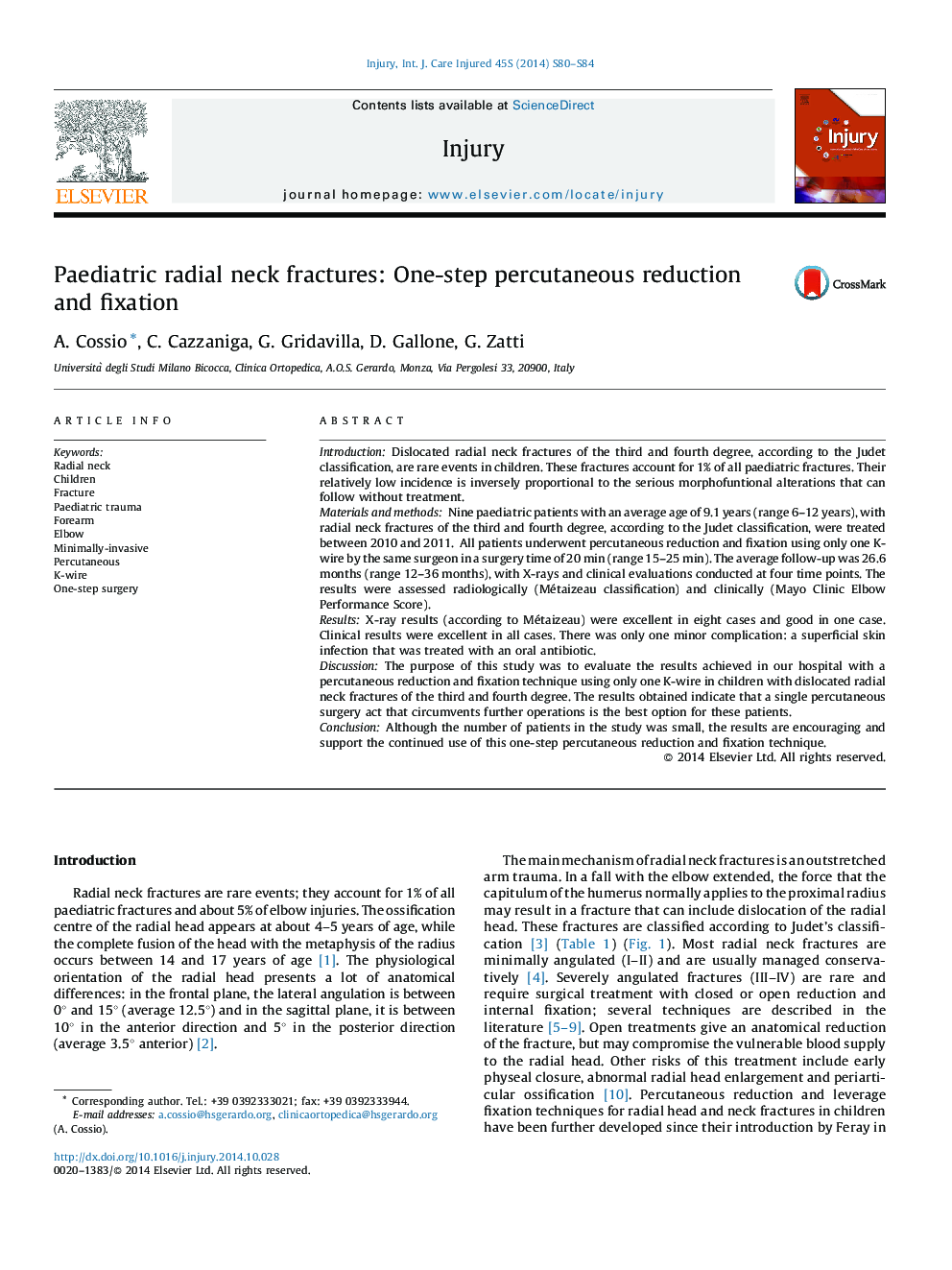| Article ID | Journal | Published Year | Pages | File Type |
|---|---|---|---|---|
| 3239729 | Injury | 2014 | 5 Pages |
IntroductionDislocated radial neck fractures of the third and fourth degree, according to the Judet classification, are rare events in children. These fractures account for 1% of all paediatric fractures. Their relatively low incidence is inversely proportional to the serious morphofuntional alterations that can follow without treatment.Materials and methodsNine paediatric patients with an average age of 9.1 years (range 6–12 years), with radial neck fractures of the third and fourth degree, according to the Judet classification, were treated between 2010 and 2011. All patients underwent percutaneous reduction and fixation using only one K-wire by the same surgeon in a surgery time of 20 min (range 15–25 min). The average follow-up was 26.6 months (range 12–36 months), with X-rays and clinical evaluations conducted at four time points. The results were assessed radiologically (Métaizeau classification) and clinically (Mayo Clinic Elbow Performance Score).ResultsX-ray results (according to Métaizeau) were excellent in eight cases and good in one case. Clinical results were excellent in all cases. There was only one minor complication: a superficial skin infection that was treated with an oral antibiotic.DiscussionThe purpose of this study was to evaluate the results achieved in our hospital with a percutaneous reduction and fixation technique using only one K-wire in children with dislocated radial neck fractures of the third and fourth degree. The results obtained indicate that a single percutaneous surgery act that circumvents further operations is the best option for these patients.ConclusionAlthough the number of patients in the study was small, the results are encouraging and support the continued use of this one-step percutaneous reduction and fixation technique.
